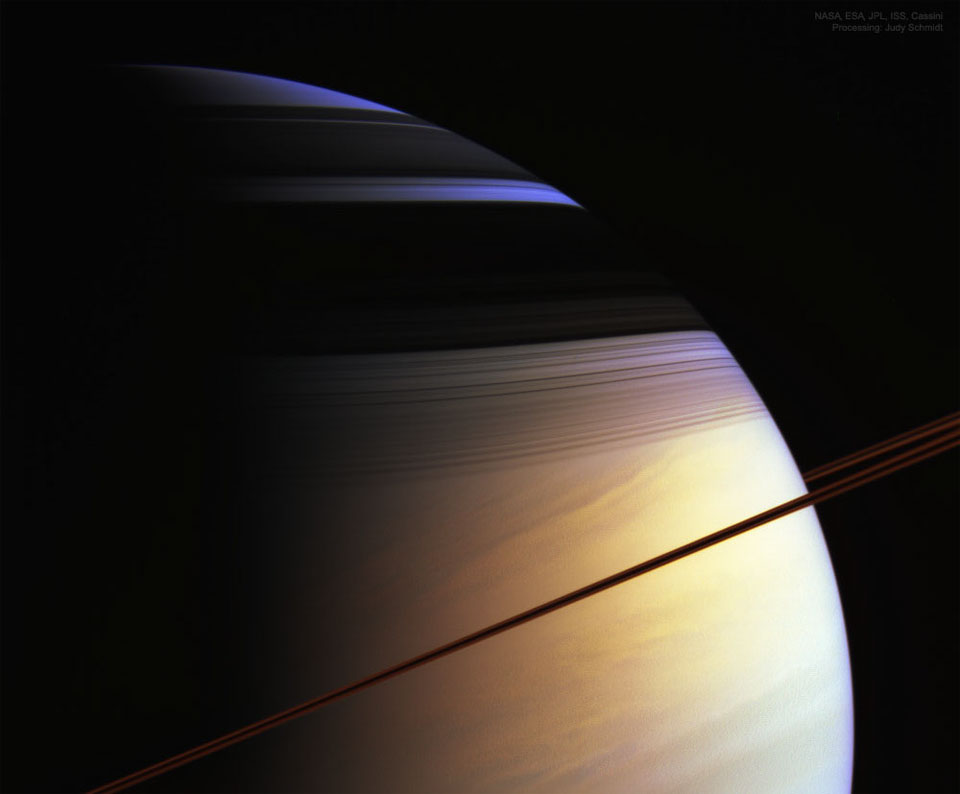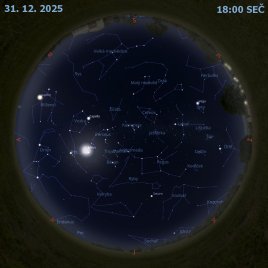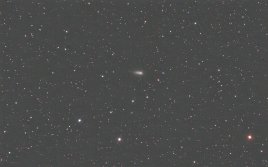Barvy Saturnu z Cassini

Uznání: NASA, ESA, JPL, ISS, Cassini Imaging Team; Processing & License: Judy Schmidt
Co vytváří barvy Saturnu? Snímek Saturnu jen mírně přehání to, co by viděl člověk, kdyby se vznášel v blízkosti tohoto obřího světa s prstenci. Snímek pořídila v roce 2005 kosmická sonda Cassini, která v letech 2004 až 2017 Saturn obíhala. Majestátní prstence Saturnu se zde jeví pouze jako zakřivená čára, která je zčásti díky své infračervené záři hnědá. Prstence nejlépe ukazují svou složitou strukturu v tmavých stínech v horní části planety. Severní polokoule Saturnu se může jevit částečně modrá ze stejného důvodu, proč se může jevit modrá zemská obloha - molekuly v bezoblačných částech atmosfér obou planet lépe rozptylují modré světlo než červené. Při pohledu do hloubky Saturnových mraků však začne převládat přirozený zlatý odstín Saturnových mraků. Není známo, proč jižní Saturn nevykazuje stejný modrý odstín - jedna z hypotéz tvrdí, že oblačnost je tam vyšší. Není také známo, proč jsou některá Saturnova mračna zbarvena dozlatova.
Seznam odkazů v popisu
- Flickr.com: Judy Schmidt: Saturn
- APOD: 2019-08-18 Člověk jako kosmická loď
- ESA.int: Cassini spacecraft
- NASA: Saturn
- Wikipedia: Rings of Saturn
- NASA: Infrared Waves
- YouTube.com: Dark Shadows Original B/W Opening
- NASA: Saturn’s Blue Cranium
- UCR.edu: Why is the sky blue?
- APOD: 2005-10-10 Vířící bouře na Saturnu
- Ftcdn.net: Foto: Tři psi :-)
- Harvard.edu: Clouds and Haze on Saturn
- APOD: 1996-08-03 Jupiter's Colorful Clouds
NASA Official: Phillip Newman Specific rights apply. NASA Web Privacy Policy and Important Notices
A service of: ASD at NASA / GSFC & Michigan Tech. U.
Odkaz na originální APOD


